Heritage buildings, iconic landmarks which shape regional Queensland
From beautiful 19th century heritage listed edifices to quirky historical landmarks, we list some of the remarkable structures which shape regional parts of Queensland.
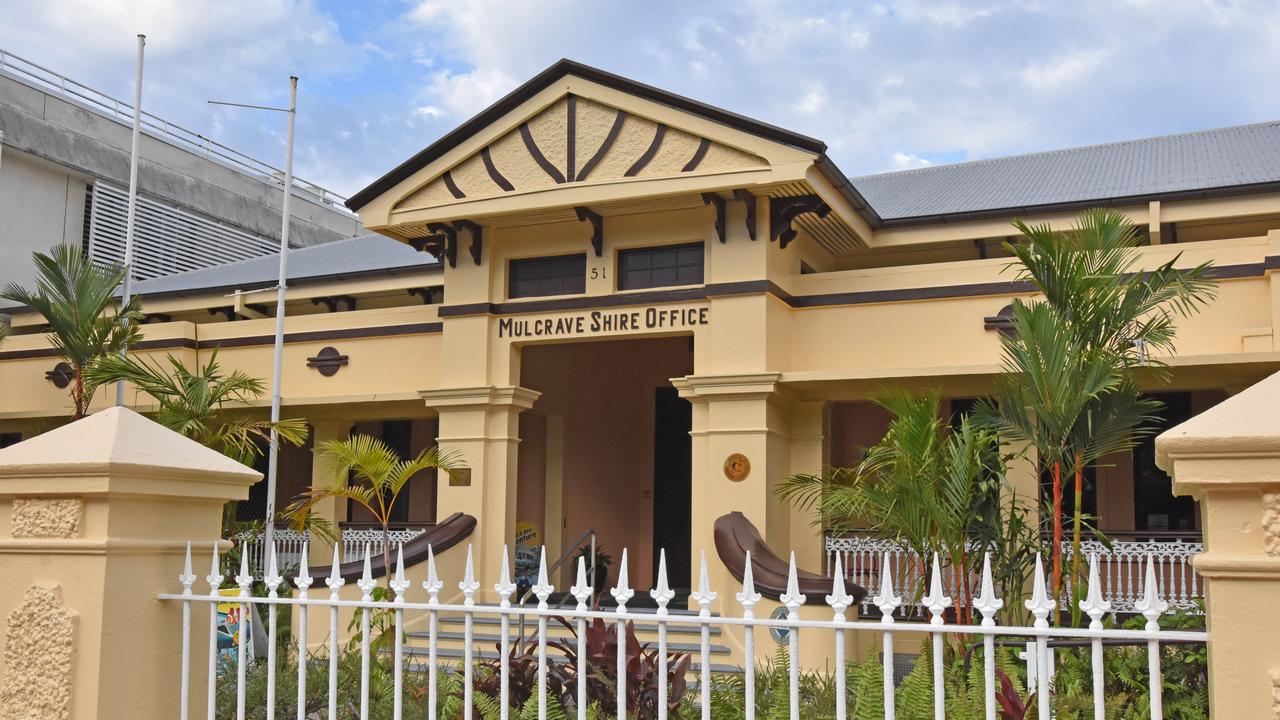
Sunshine Coast
Don't miss out on the headlines from Sunshine Coast. Followed categories will be added to My News.
Regional Queensland is home to a vast array of heritage buildings and iconic landmarks that are quintessentially Australian, ranging from glorious sandstone structures to post-war masterpieces.
Whether you’re admiring the stunning colonial edifices or relishing in their origin stories, processes are in place to protect these sights of cultural significance in Queensland.
University of Queensland’s professor of architecture John Macarthur said these listings were the most high profile way of getting the community to connect with their own history.
“If a building’s listed on a council or state register, it’s bringing people’s attention together as well as attention to other values connected to the past along with a sense of community,” he said.
Professor Macarthur said there was a misconception that heritage building legislation would hinder homeowners and was “much less restrictive than they think”.
“People want the buildings to continue to have life, [they] aren’t listed in a way they have to be turned into museum pieces,” he said.
“It’s certainly negotiable, very high profile and important buildings have been modified and used for other purposes and made accessible.”
The academic said there were a multitude of reasons a building could be heritage listed.
“For some it’s due to good architecture, others it was connected to important people like birthplaces,” Professor Macarthur said.
“Your attention is drawn to them for a variety of reasons.
“The way the principles in the act work is you’re looking for places that allow people to connect with Queensland’s history.”
When it comes to architecture seen in Queensland particularly, Professor Macarthur said it differed from dominant 19th buildings, modernist homes of the post-war period and even institutional buildings and public works, for example courthouses and educational facilities in the later 20th century.
See some of these fascinating structures from regional Queensland below.
Noosa Shire
Apollonian Hotel, Boreen Pt
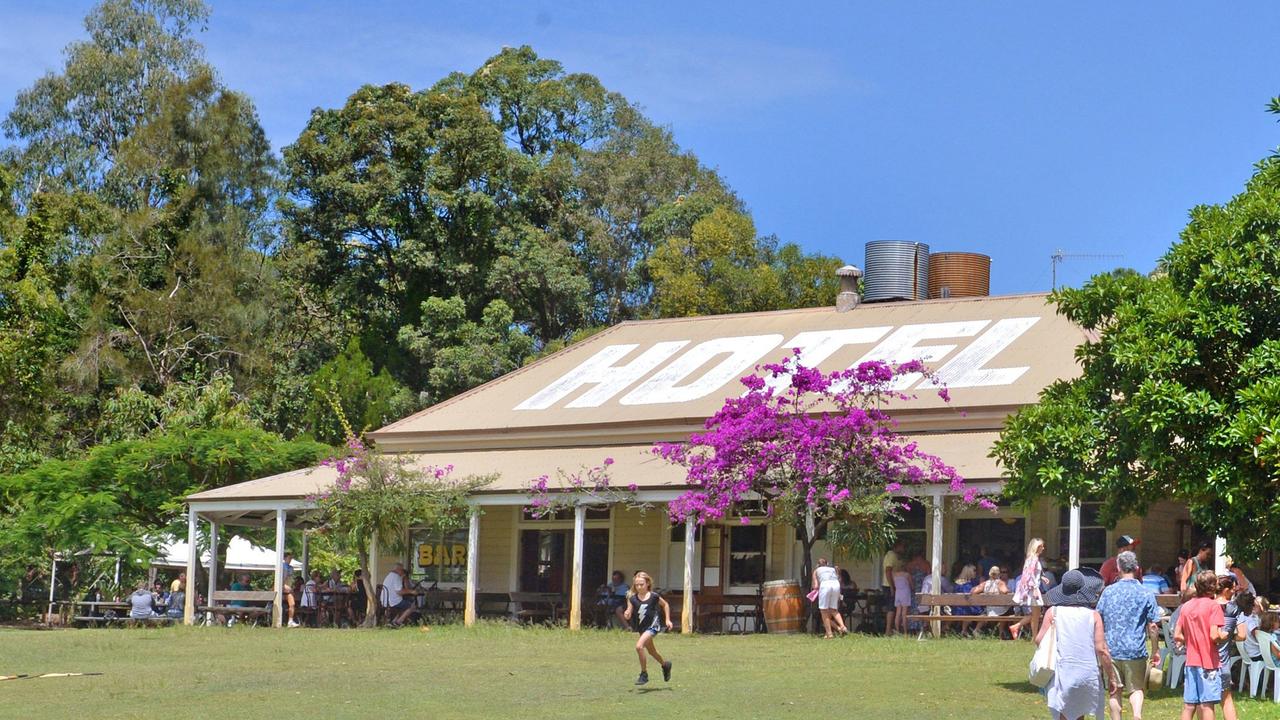
Originally known as the “Goldfields Pub” in Gympie due to the discovery of gold, the pub was built in 1879 and stood until the decline of the boom times in 1951.
The 19th century rural hotel was relocated to its present site at Boreen Pt in 1988, and has since added improvements such as replicas of an old out house, rail fences and an outdoor eating area.
Majestic Theatre

Constructed as the “Majestic Hall” in Pomona and renovated in the 1930s to allow for “talkies” to be played, the venue has shown movies since 1921.
It’s existence demonstrates the evolution of film exhibition venues across the state where community halls were used to show films, while showing the role cinema played in the lives of regional Queenslanders from the 1920s to 1950s.
Pomona Police Residence, Lock Up and Courthouse
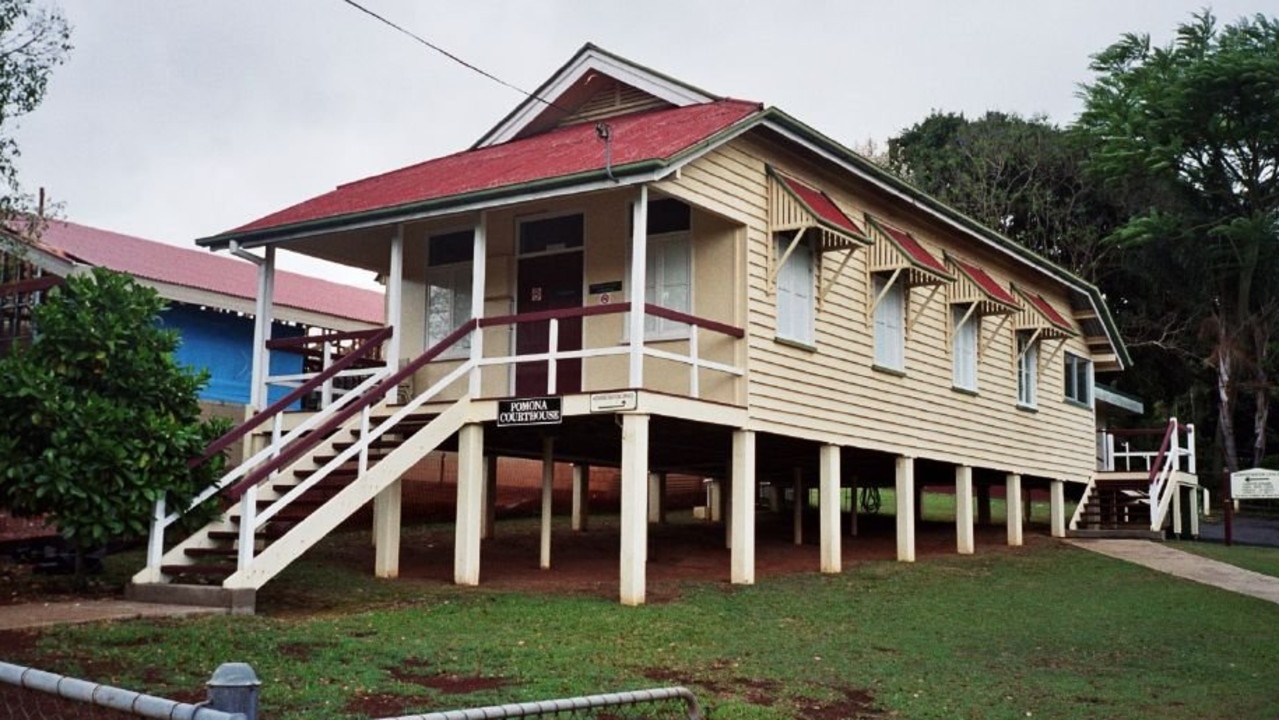
The Police and Courthouse precinct at Pomona contains a wooden police residence and former station, courthouse, and a lockup typical of pre World War II Queensland state precincts.
It’s existence illustrates the past era of law enforcement in a small country town, bringing back memories of police work in yesteryear while still being used in the essential roles of law and justice in the Noosa hinterland.
Halse Lodge, Noosa Heads
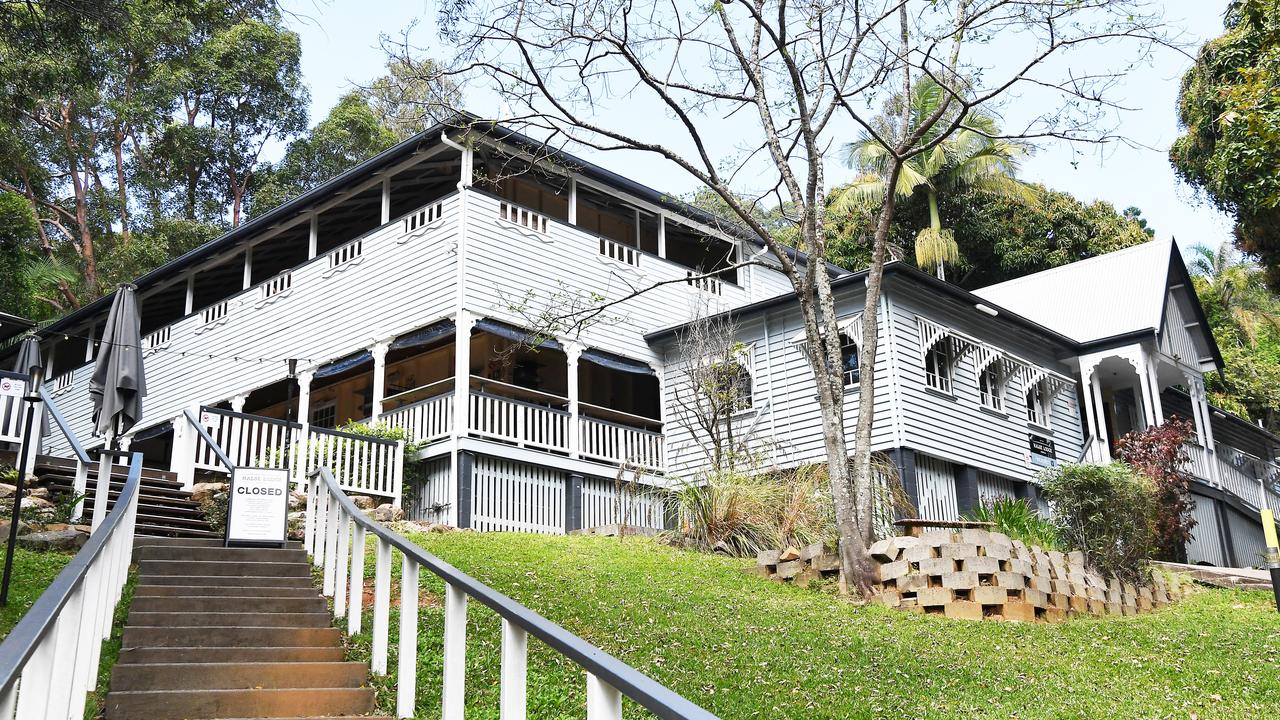
Built in the late 19th century and still operating today as a guesthouse, Halse Lodge is evidence of Noosa’s steady rise of holiday accommodation over the past century.
Located in its elevated position overlooking what is now Noosa Heads, the stoic two-storey timber building is an important chapter in the area’s history and its development over time.
Sunshine Coast
The Big Pineapple, Woombye
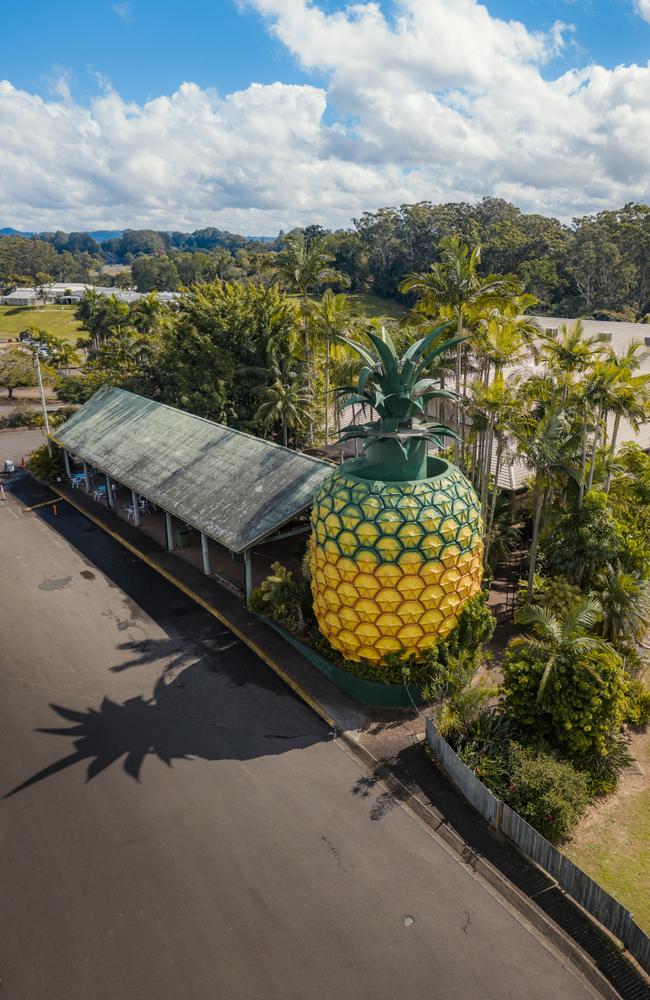
The iconic fruit structure on the Sunshine Coast was built in 1971 and remains one of Queensland’s popular tourist destinations, attracting up to one million visitors during its peak year.
Nestled along the old Bruce Hwy in the hinterland, the 16m fibreglass pineapple is a part of a complex which also houses a tramway, train, attractions and buildings related with Sunshine Plantation.
Bankfoot House Heritage Precinct, Glass House Mountains

Situated in the picturesque Sunshine Coast hinterland, Bankfoot House is known as the only known surviving coach change station for the Brisbane to Gympie goldfields coach route.
The home was owned and occupied by several generations of one Sunshine Coast family for 134 years from the 1860s to 2002 and was the oldest known surviving building in its district, paying homage to the pioneering settlement which inhabited the area.
Lighthouses, Caloundra

The great beacons of light at the southern Sunshine Coast, which were constructed in 1896 and 1968, still stand as safety structures for marine navigators.
The first structure was erected to mark the entrance of the North West Channel in Moreton Bay which was historically known as the most reliable and most used entry to the Port of Brisbane since the 1840s and marked the area as an early tourist destination.
For the latter lighthouse, it was only one of two constructed of its design in the nation.
Kings Beach Bathing Pavilion, Caloundra
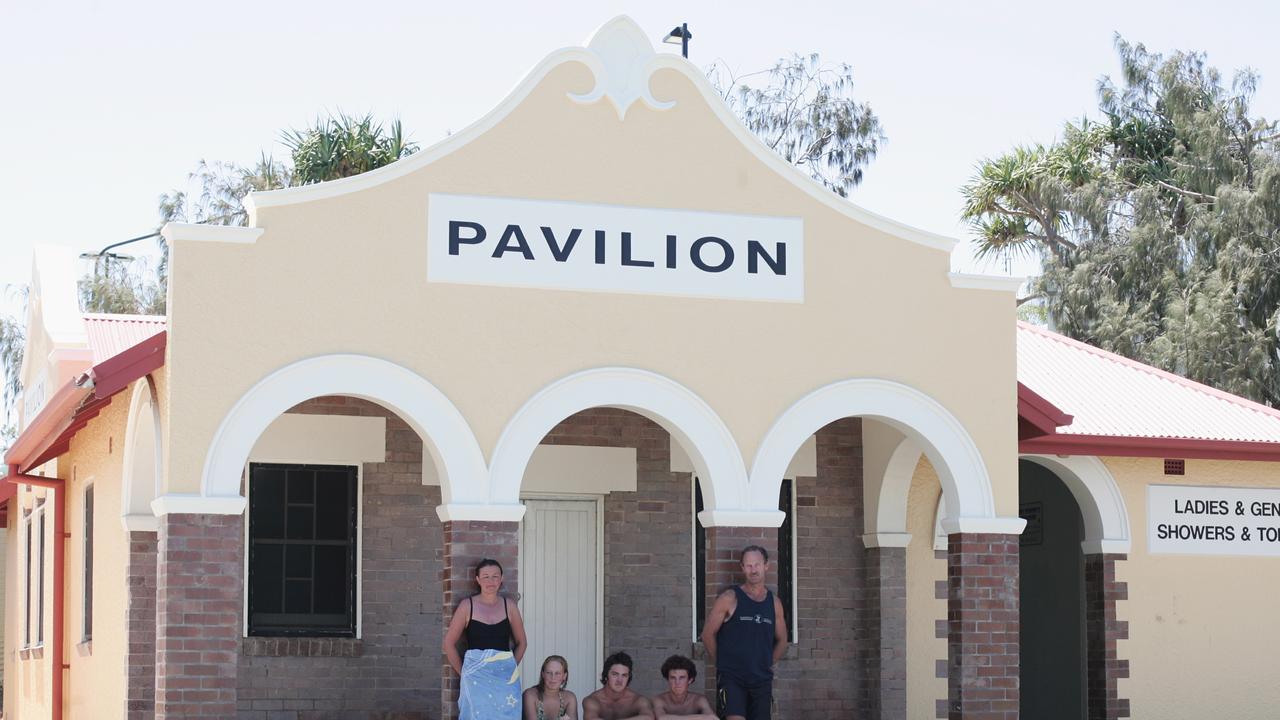
Caloundra’s history as a holiday resort involved the local council’s intuition to build the Kings Beach bathing pavilion, to enhance the allure of the Sunshine Coast as a tourist hotspot.
The building, which has strong ties to the Caloundra Surf Life Saving Club, dates back to the 1930s when it was built as a changing and open air toilet facility, with the architectural influence of Spanish Mission.
S.S. Dicky
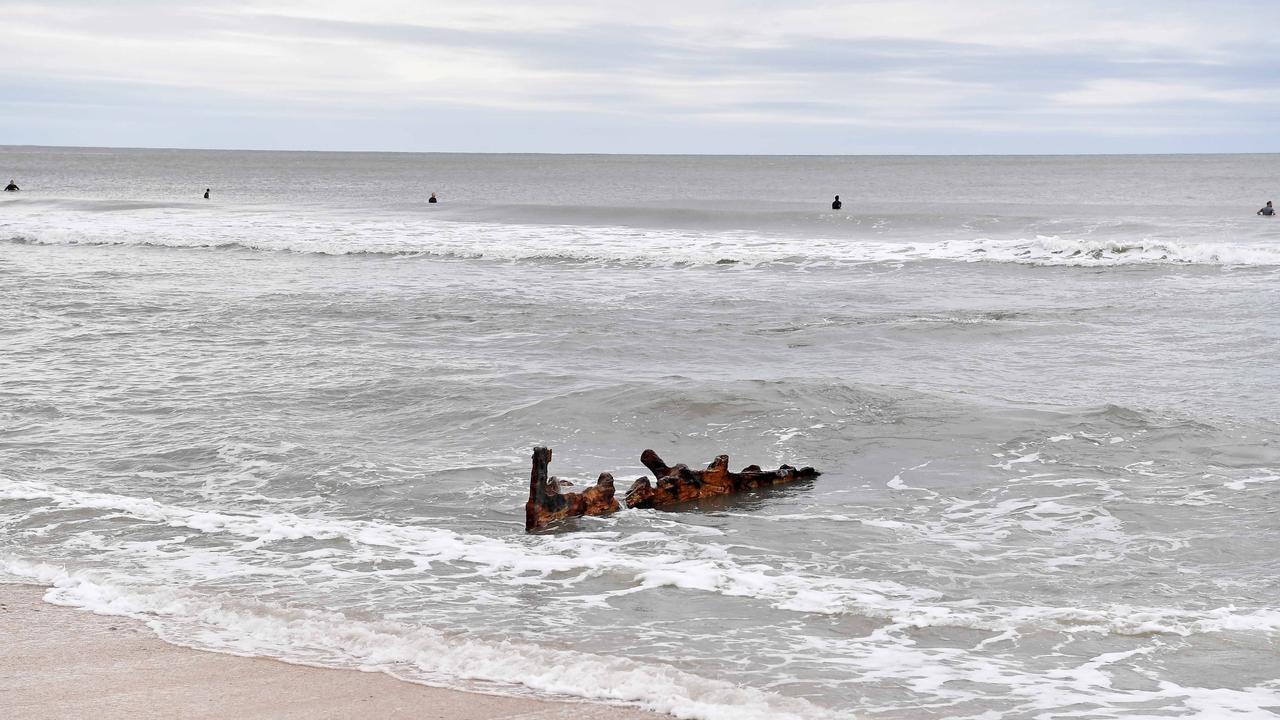
Although not a traditional heritage listed landmark, the SS Dicky is well known across the Sunshine Coast after it ran aground during a cycle in 1893 and has always been a fun drawcard for Caloundra.
Gold Coast
Kinkabool Apartments, Surfers Paradise

The home unit-building, named Kinkabool, was the Gold Coast’s first ever high-rise, and one of the earliest in Queensland to stand tall.
In another ode to Australia’s push for growing beach tourism, it drew influence from the American standards of accommodation post WWII.
Kirra Beach Pavilion
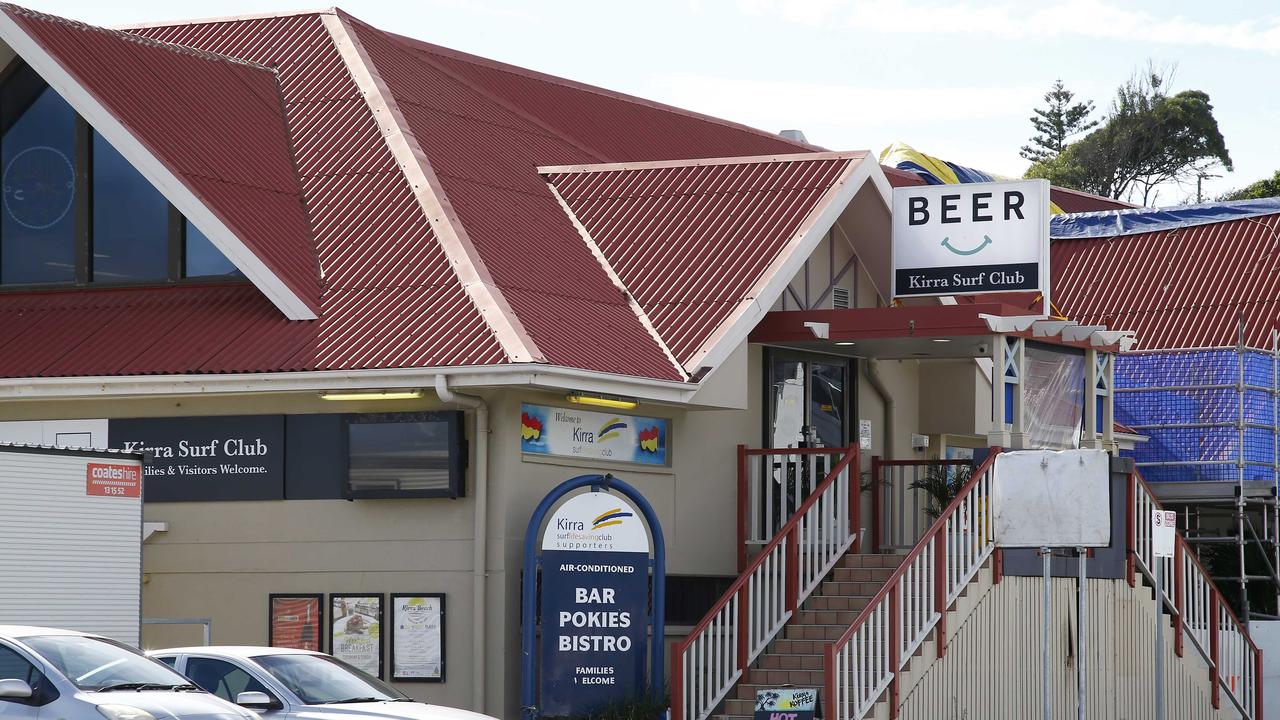
Although not heritage listed by the state government, the Kirra Beach pavilion has stood the test of time, with it being Australia’s second oldest surf life saving club.
This building has been a mainstay for locals and tourists since its inception in 1935 due to its pristine location and one of the world’s most famous surf breaks.
Pink Poodle sign, Surfers Paradise
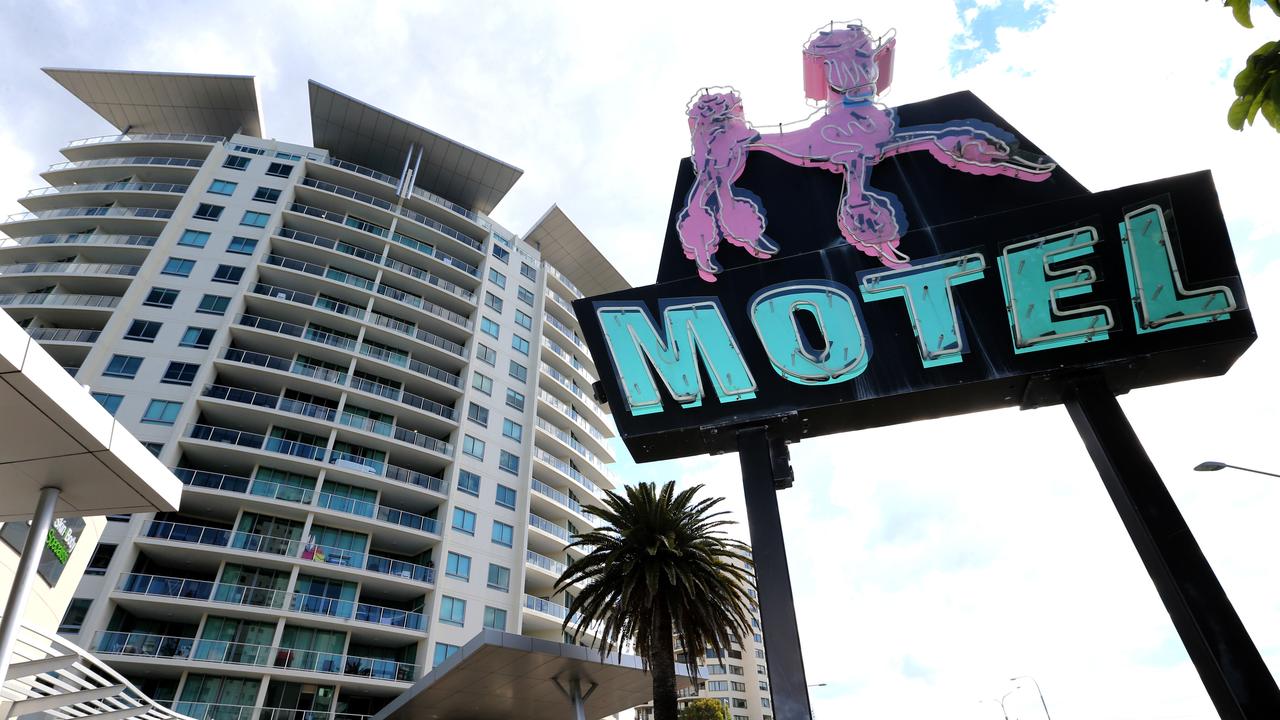
Originally accompanying the Pink Poodle Motel on the Gold Coast Highway in 1967, the neon pink sign has also stood the test of time.
Even after the motel was demolished in 2004, elements of the original building remain as well as the sign which was nominated for heritage listing in 2006 and even appeared on an Australian postage stamp at one point.
Matey the dog memorial

The memorial statue of Matey the dog in Surfers Paradise was erected in 1957 to honour a much loved stray for his habit of accompanying patrons home from the Surfers Paradise Hotel in the 1940s and 50s.
Matey, believed to have been a kelpie-cross, was an identity among locals and tourists and lived on the streets of Surfers Paradise for 12 years.
Main Beach Pavilion and Southport Surf Lifesaving Club
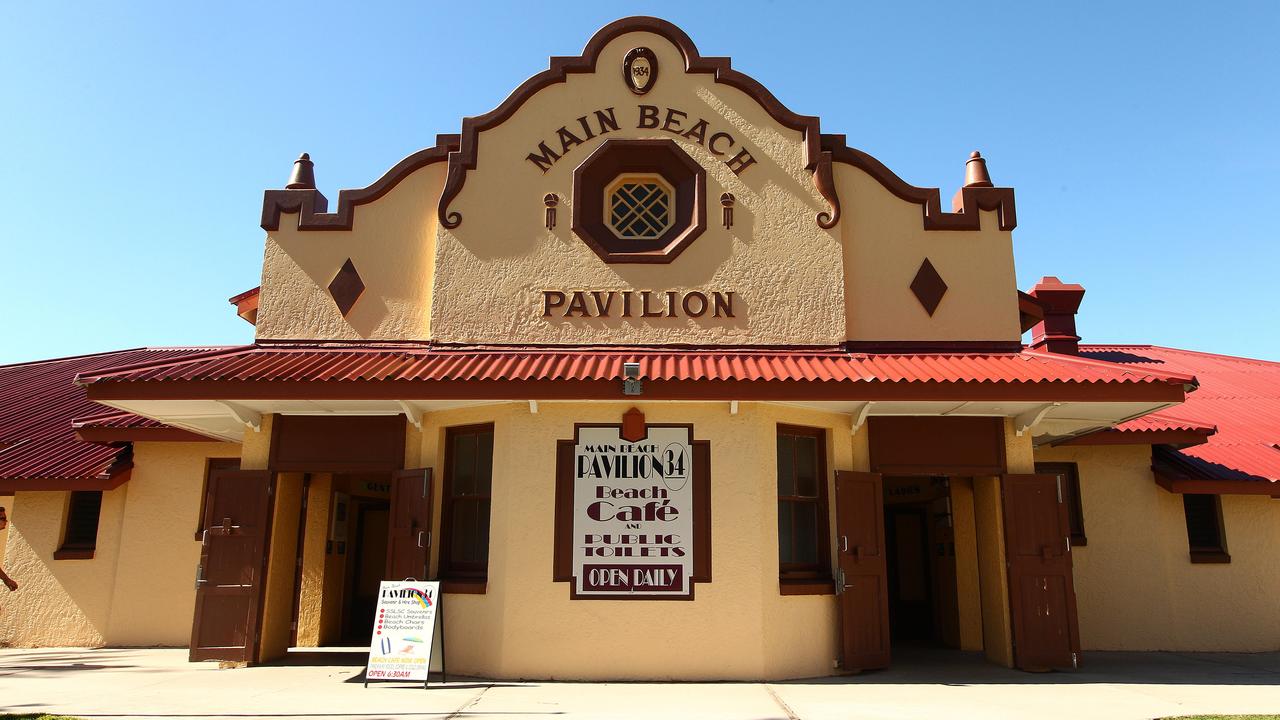
The Main Beach Pavilion in Southport, built in 1934 and sporting classic Spanish Mission style architecture, was erected during a rapid time of growth for the region where bathing in sea water was the premier recreational activity.
Toowoomba
Royal Bull’s Head Inn, Drayton

The two storey building, built in 1847 in Toowoomba, represents the importance of Drayton as an early period European settlement, located on a trading route between the town and other cities on the coastline.
The heritage listed building was bought by the National Trust of Queensland and was no longer used for accommodation, but as a museum based on a wayside inn.
Former Toowoomba Court House & Old Toowoomba Gaol Wall
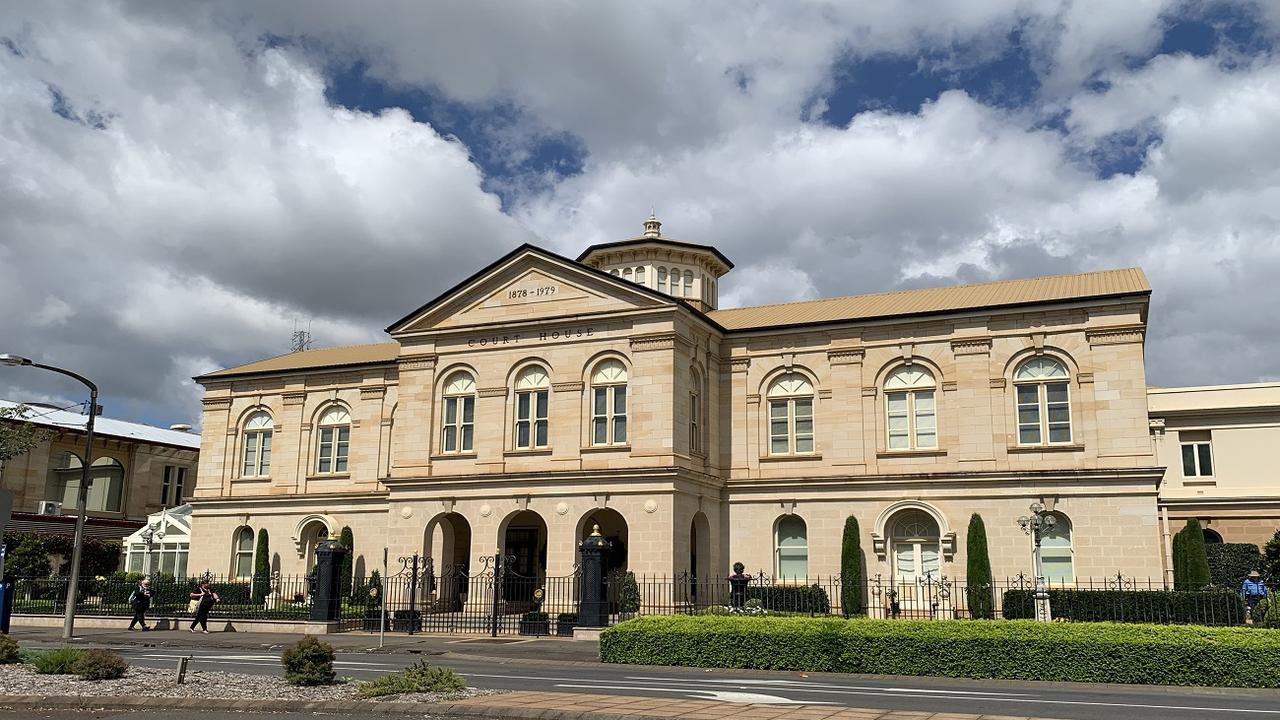
The old courthouse and jail, built in the late 19th century between 1876 and 1878, still stands as an impressive structure in Toowoomba’s CBD.
The neoclassic masonry building was the second of the town’s three courthouses, and was also an important structure in Toowoomba's cultural scene as a museum and community hall.
Former Empire Theatre

With the fly-tower intact, the Empire Theatre is important in exemplifying the early symbiosis of stage and film theatre.
The building is important historically for its close association with the expansion of mass entertainment in Queensland in the first half of the 20th century.
White Horse Hotel
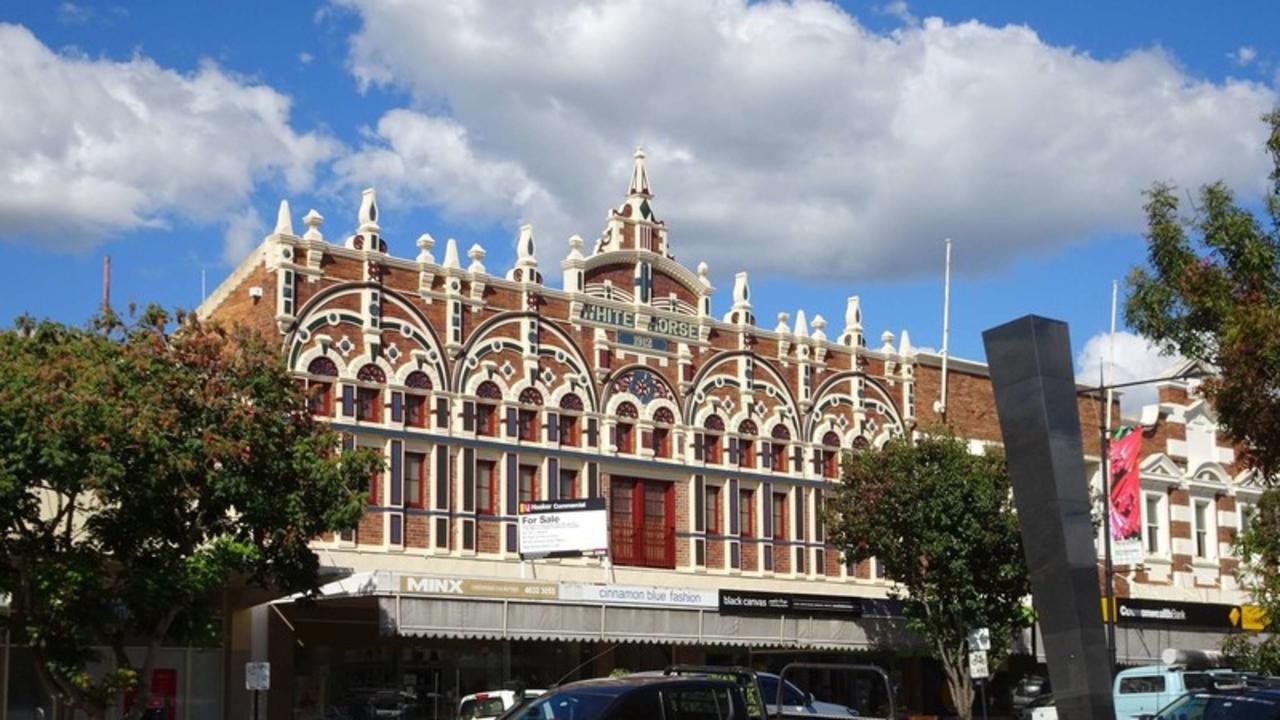
The impressive facade of the White Horse Hotel still stands strong on Toowoomba’s main drag of Ruthven St since its creation in 1866.
Its aesthetic significance, created by home grown architects James Marks and Sons, stands the test of time.
The hotel was sadly closed in 1986 however the ground floor areas run as shop fronts.
Jondaryan Woolshed

The longstanding Jondaryan Woolshed, situated in the regional Darling Downs near Toowoomba and erected in 1859, was one of the earliest and largest pastoral businesses in the region during its time.
It’s establishment created employment opportunities and facilities for families to come to the settlement to help sheer sheep for the fast paced wool industry in the 19th century.
The property was established into a tourist attraction in 1976.
Men’s toilet on Russell St
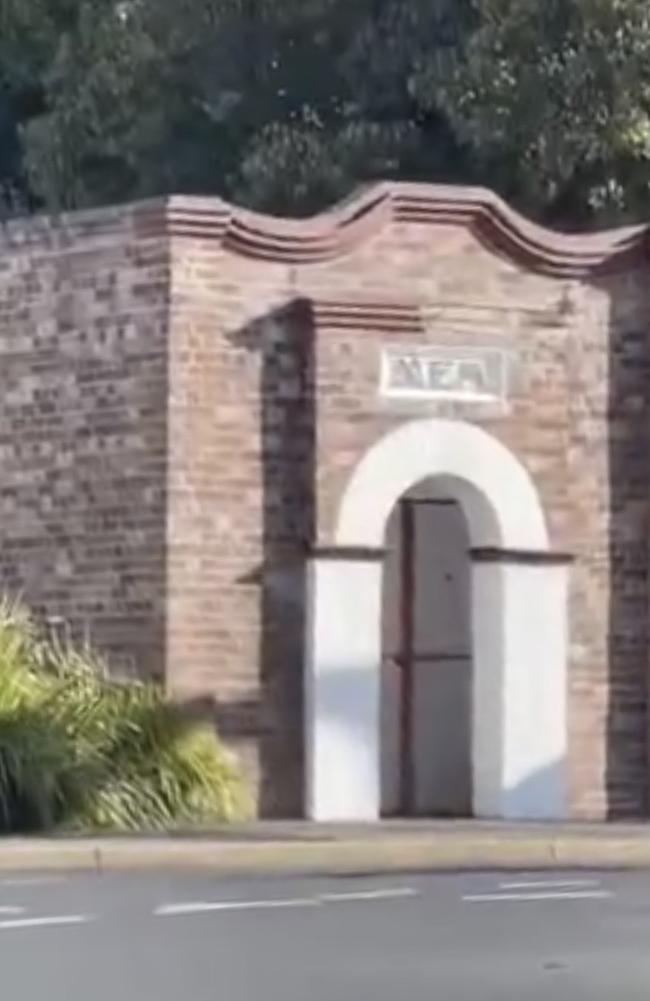
What may not be known is the Men’s Toilet in Russell St in Toowoomba is in fact the oldest known existing urinal in the state.
The structure, built in 1919, was evidence of Queensland’s investment into public health in the town’s history.
Townsville
The Sugar Shaker (The Hotel Grand Chancellor)

Nestled inside the Townsville CBD, the Grand Chancellor Hotel building is Townsville’s tallest high-rise after being built in 1976.
First named the old Central Hotel, the iconic building is colloquially known as the “Sugar Shaker” building due to its peculiar shape.
The Queens Hotel on The Strand
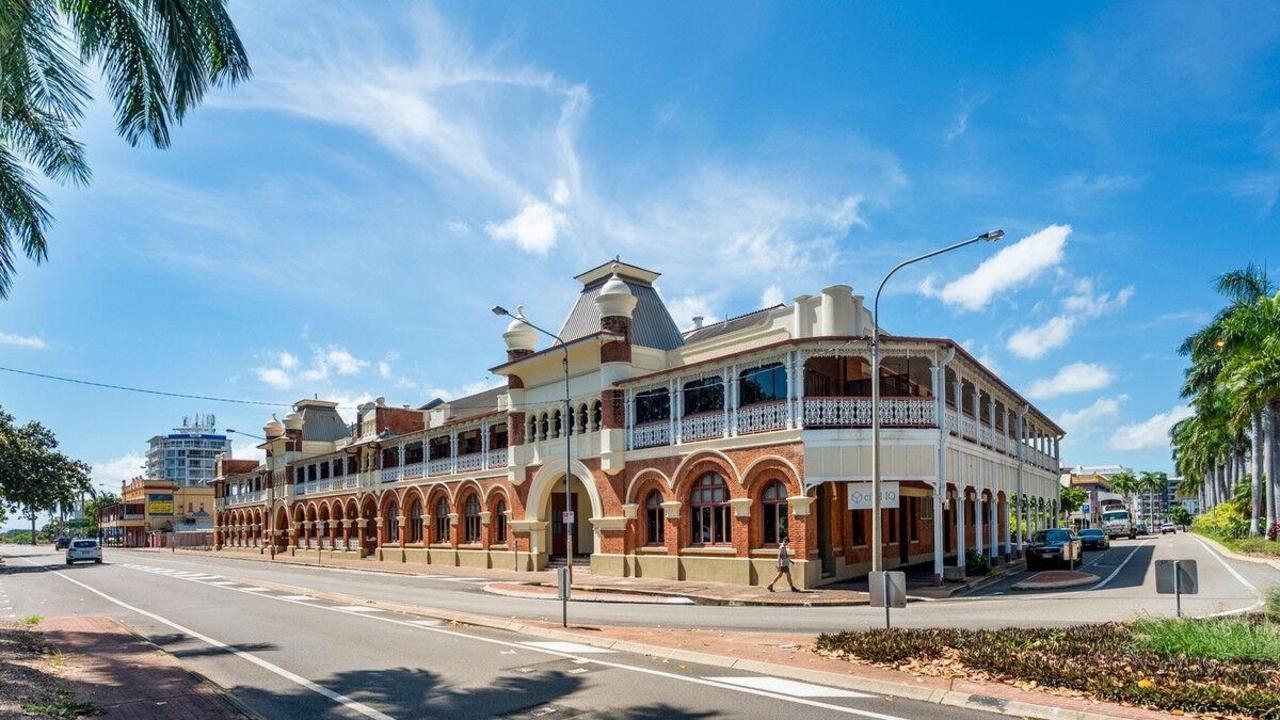
First built on The Strand in Townsville in 1872, the glorious heritage listed building extended along Wickham Street and garnered a reputation in Queensland as one of the finest going around.
It was the first hotel in Townsville supplied with reticulated water and connected to gas.
Cyclone Leonta in 1903 damaged much of the timber hotel, and rebuilding the following year retained some of the original wood structure while replacing most with brick.
The hotel was occupied by the American Army during WWII before the interior was later converted into theatres and then television and radio studios.
Townsville Brewing Co (old post office)
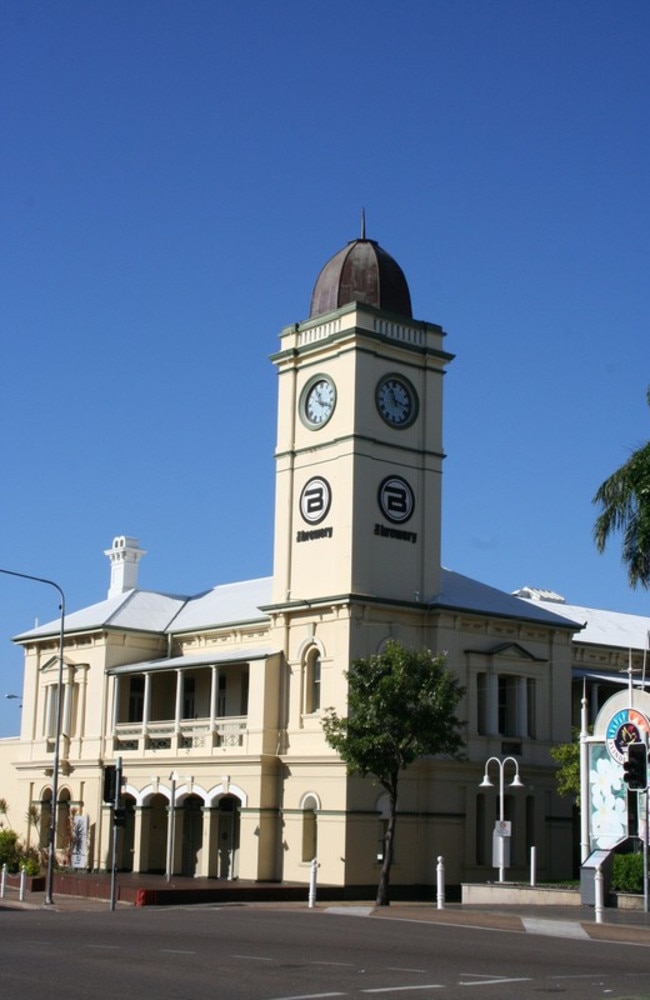
Built in 1896, the old Townsville Post Office still stands tall today in a homage to the purpose-built colonial building which had remnants of renaissance elements, standing in the city for more than 100 years.
The building suffered bomb damage which led to its clock tower being dismantled in 1942. It often became the scene of rallies for political movements, with a speaker remonstrating from a soap box on the street.
The Townsville Brewing company began operating from the building in 2001 which now offers a restaurant, tavern, event centre and distillery inside the building.
Former Townsville Railway Station
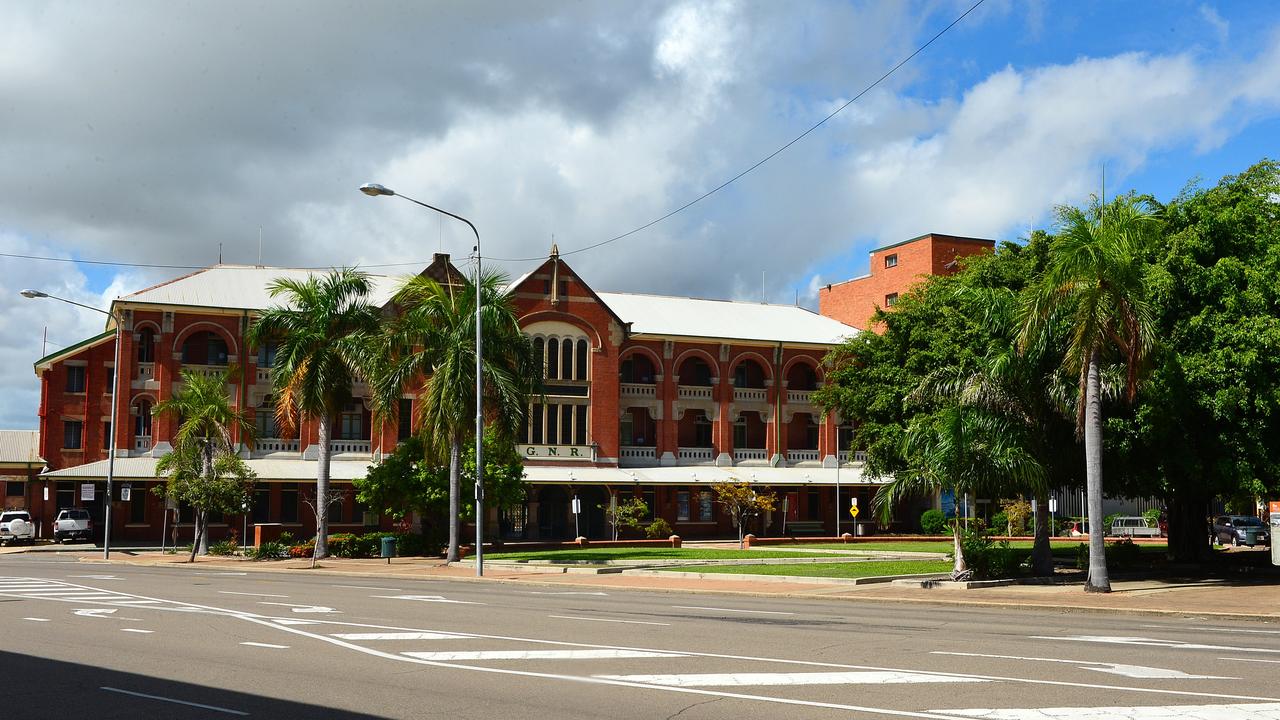
The old Townsville Railway Station and workshops still stands strong as a rare tribute to regional 19th century industry which operated for over a century.
It was first established to coincide with the Northern Railway heading west from Townsville which was sparked by the discovery of gold in 1869 at Ravenswood.
The present station which stands today was officially opened in 1913 and was accompanied by multiple shopfronts including a blacksmith, carpenter, tender and motor shop.
It was permanently closed in 1990 when major train services stopped running to the station.
The station was heritage listed in 1992.
Customs House, The Strand
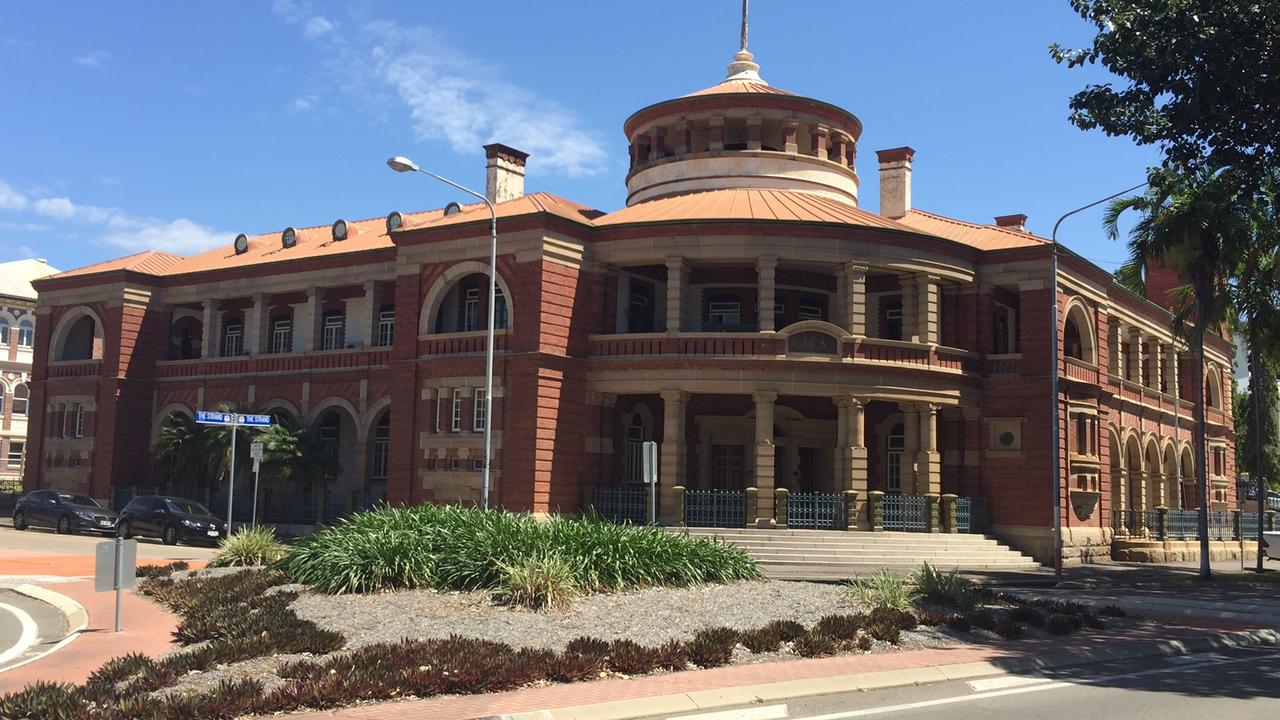
Completed in 1902 and commissioned by the Queensland Government prior to Australia’s forming of the federation, the imposing brick structure still defines part of Townsville’s CBD.
It was built during a time where there was a handover of government departments and their facilities to the newly formed Australian government.
The elegant sandstone building remains intact more than a century later and has housed many government departments in its time. It is however no longer owned by the Commonwealth and was heritage listed in 2005.
Cairns
The Big Peanut, Tolga
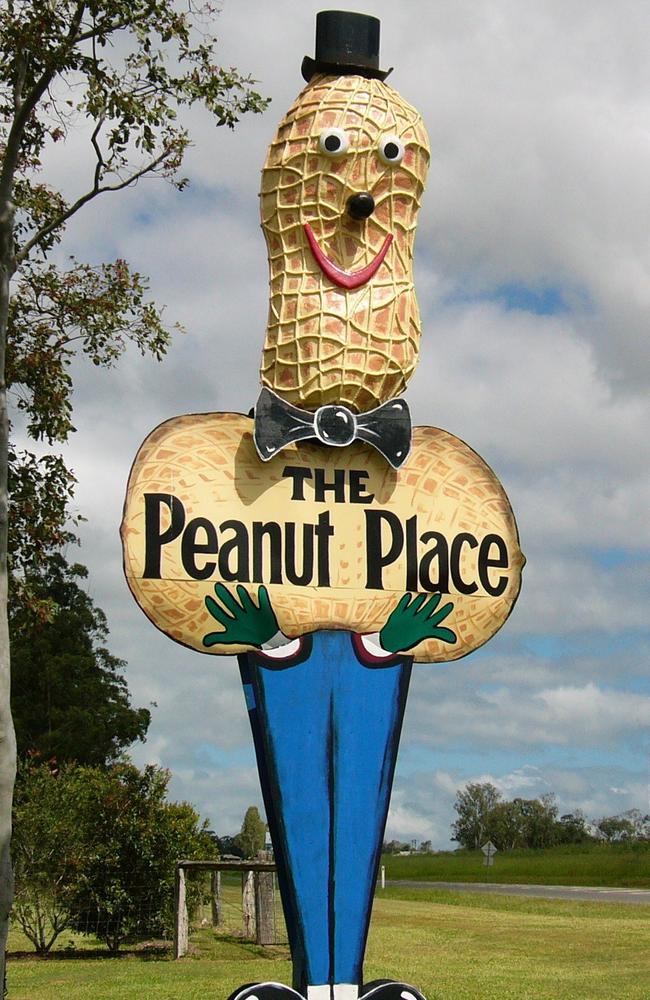
Although technically not heritage listed, the Big Peanut Man at Tolga has been a smash hit for tourists and residents in the Atherton Tablelands.
Situated more than an hour south of Cairns, the business it was advertising The Peanut Place closed in 2018, however the man still stands.
Court Complex, Cairns

The Cairns Court complex has maintained a presence in the Far North major city since its inception in 1919.
It ran as an operating judicial building up to 1992, with the complex now serving as an art gallery and event space from 2020. It once operated as a hotel too before being taken over by the council.
Mulgrave Gallery
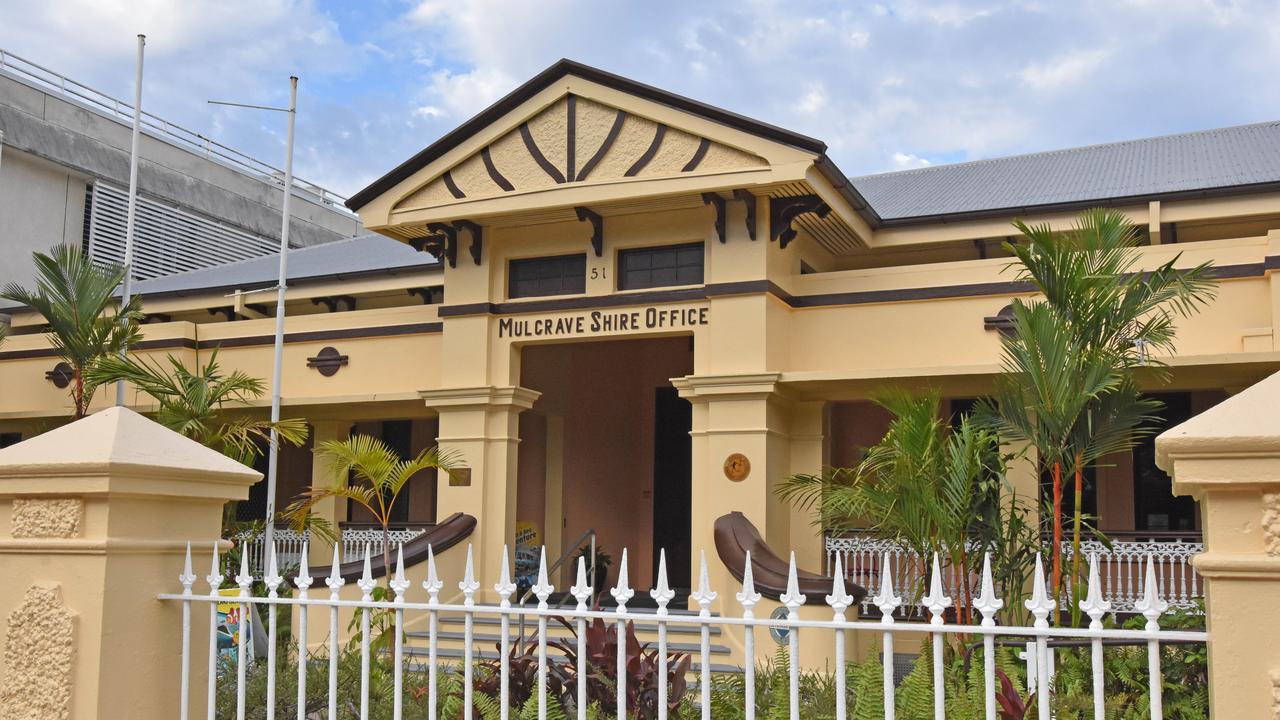
The former Mulgrave Shire Council Chambers’s aesthetic significance is a welcomed sight along the Esplanade streetscape in Cairns since being constructed in 1912.
Now fashioned into an art gallery, the pre-WWI building emanates the community’s sense of identity and history. 
Hides Hotel

Constructed in two stages in 1928 and 1936, this three-storey concrete edifice celebrates almost a century of being nestled in the CBD of Cairns.
The heritage listed building was the second structure built for the business, which was originally constructed in 1885.
The second in time building continues to operate as a hotel, which helped the Hides Hotel be part of the town’s social fabric.
Cairns Council Chambers
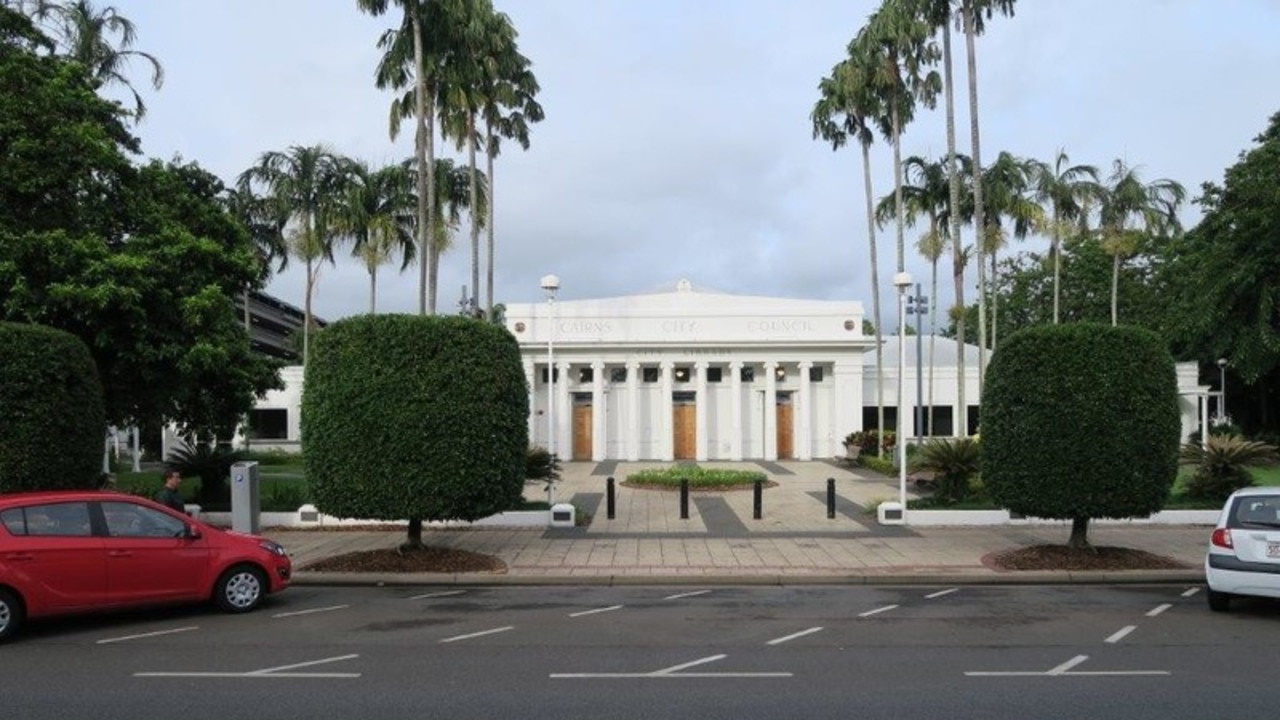
The Cairns City Council Chambers stands today in the tropical city as an ode to Cairns’ evolution from town to city status after WWI.
Constructed in 1929-30 with its iconic white pillars and reinforced concrete, the structure now serves as the town’s library.
Wide Bay
Burnett Bridge

Bundaberg’s Burnett Bridge stands talls as a symbol of the region's growth due to the sugar boom in the late 19th century, with it being the longest of its type in Queensland.
Government spending on the metal truss bridge led to its construction in 1900 and illustrated Bundaberg’s importance as a prosperous sugar growing area for the state.
It’s known for its classic style ornamentation, metal lamp posts and cast metal column piers.
The Story Bank, Maryborough
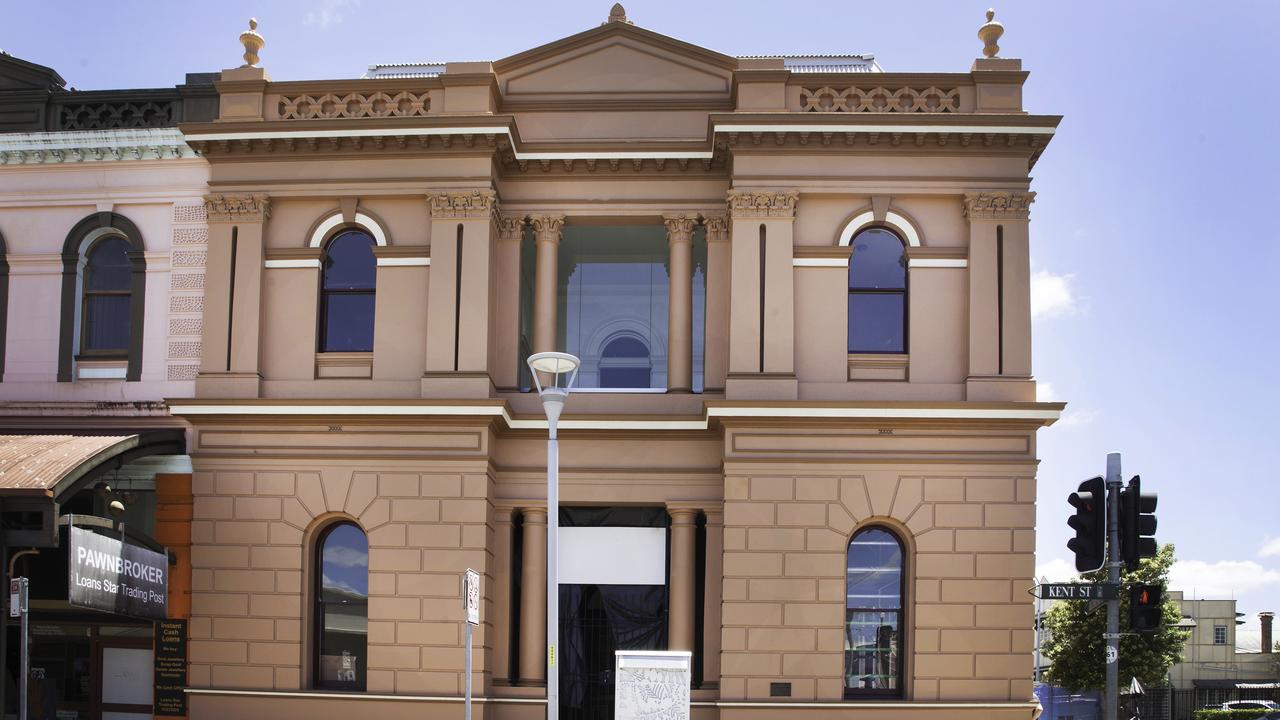
The Australian Joint Stock Bank is a cherished piece of Fraser Coast history due to it being the birthplace of the author of the Mary Poppins stories, Helen Lyndon Goff (P.L. Travers).
The building is now referred to as the Story Bank which is a popular tourist haunt.
East Water Tower Bundaberg
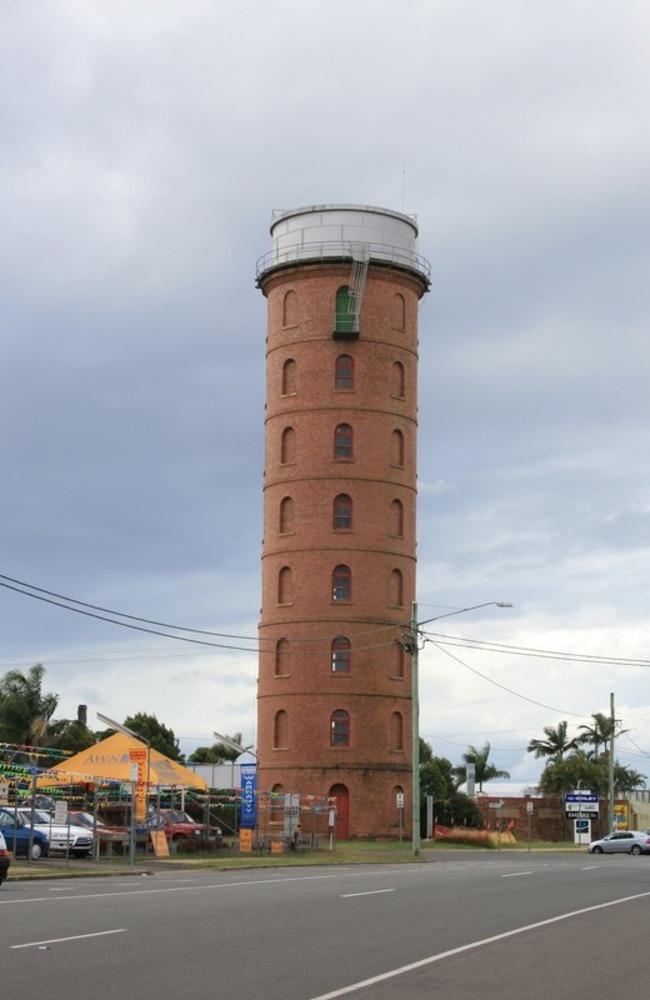
The East Water tower, constructed from 1900-02, was the only brick water tower known in Queensland at the time and contained an example of late 19th century technology.
Inducted as a state heritage structure in 1992, the tower’s design went beyond being purely functional but was also a pleasing element to Bundaberg’s streetscape.
Kingaroy Peanut Silos

Standing tall on Kingaroy’s main drag Haly St, the white silos demonstrate how large scale the peanut industry was in Queensland since they were built between 1938 and 1951.
Heritage listed in 2010, the structures serve as an ode to region’s booming agriculture industry.
Gympie Stock Exchange
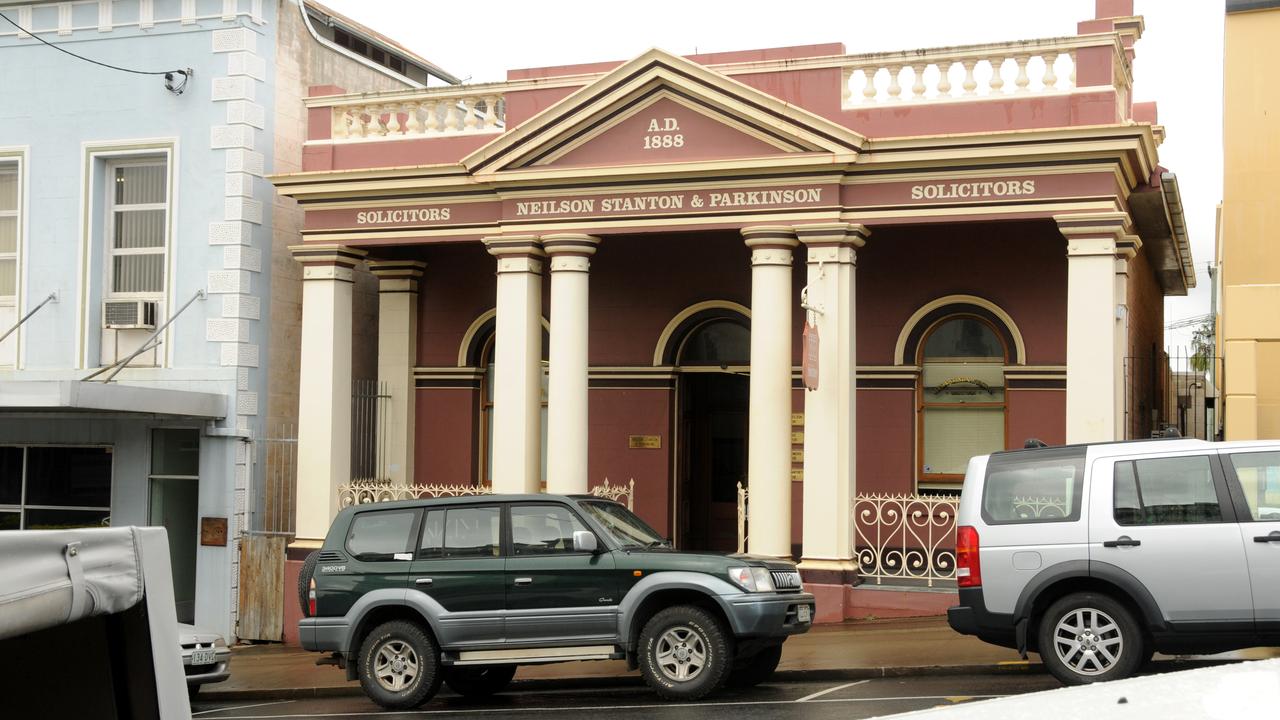
The late Victorian inspired facade of the former Australian Joint Stock Bank and Gympie Stock Exchange still resides in town as a testament to Gympie's gold mining rush.
Originally built in 1881-82, the building’s purpose was to convert enormous amounts of gold into cash as well as showing the important role financial institutions played when Queensland was known as a significant gold producer.
The former Royal Bank, Maryborough

Constructed in 1888, the building was the first branch of the Royal Bank to open in the Fraser Coast town of Maryborough.
After the chain merged with the National Bank of Australia Ltd in the 1940s, the impressive building passed hands and was used for private tenancies and was now known as the Queensland International Heritage College and was heritage listed in 1992.
Dickabram Bridge, Miva

The 207m rail and road bridge, in the rural suburb of Miva north of Gympie was originally built in 1887, and is the oldest remaining bridge of its kind in Queensland.
Closed for repairs until the end of this year, the bridge recently made headlines after daredevils were seen doing a series of dives and somersaults at heights of 30m into the Mary River below.
There is also an urban legend a worker was entombed in the works after falling into wet cement.
Rockhampton/Gladstone
Cook’s Landing Place, Town of Seventeen Seventy
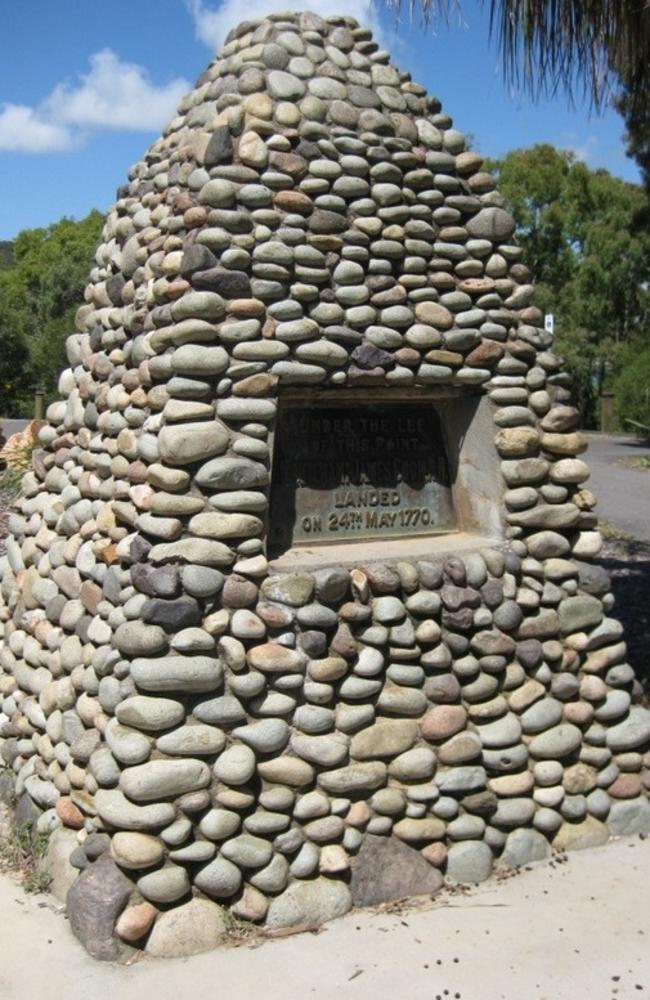
The stone structure serves as the mark where Lieutenant James Cook and Joseph Banks made their first landing in the Queensland town of Seventeen Seventy in the Gladstone region, and second in Australia during the Endeavour’s voyage which traversed the east coast of Australia.
A cairn, or a mound of large stones, was erected on the spot in 1926 and declared heritage listed in 1996.
Commercial Hotel and Chambers (former)

The Heritage Hotel, formerly the Commercial Hotel, could arguably be one of Rockhampton’s most awe inspiring watering holes, standing the test of time since 1898 in the heart of the town’s commercial district.
Confidence in Rockhampton as a strong regional city was cemented following the hotel’s establishment due to its fine quality of a late 19th Century hotel.
Customs House, Rockhampton

Built in 1899, the elegant Customs House in central Rockhampton now serves as office space following its revitalisation through the Riverside Precinct project.
Its classical revival period architecture, which was a common theme in the Central Queensland port town, was where business was conducted including collecting duties on imported goods and storing other items.
Rockhampton Post Office (former)
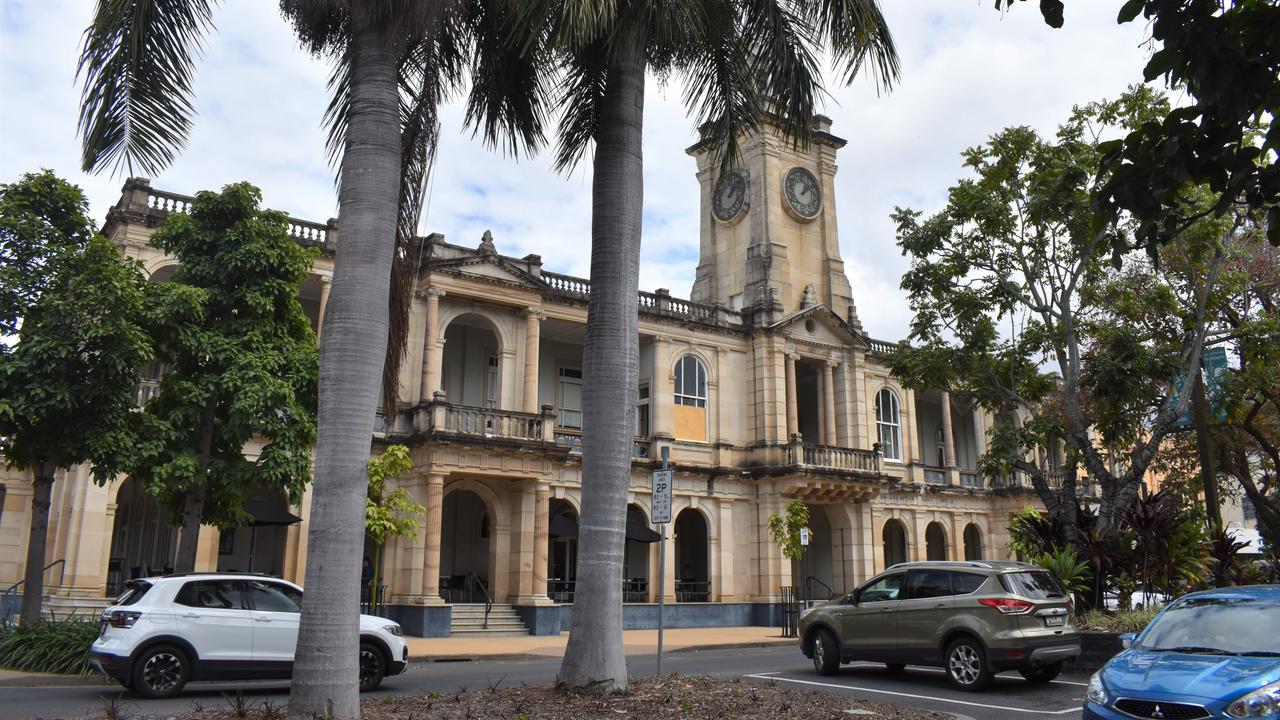
Rockhampton’s former post office building stands as an impressive edifice in the port city, dominating the street scape since 1892.
Due to the positive economic influence of gold mining at Mount Morgan, the wealth generated several prestigious buildings such as the Rockhampton Post Office.
It ceased its function as the main post office in 1997 and was heritage listed in 2003.
Harbour Board building
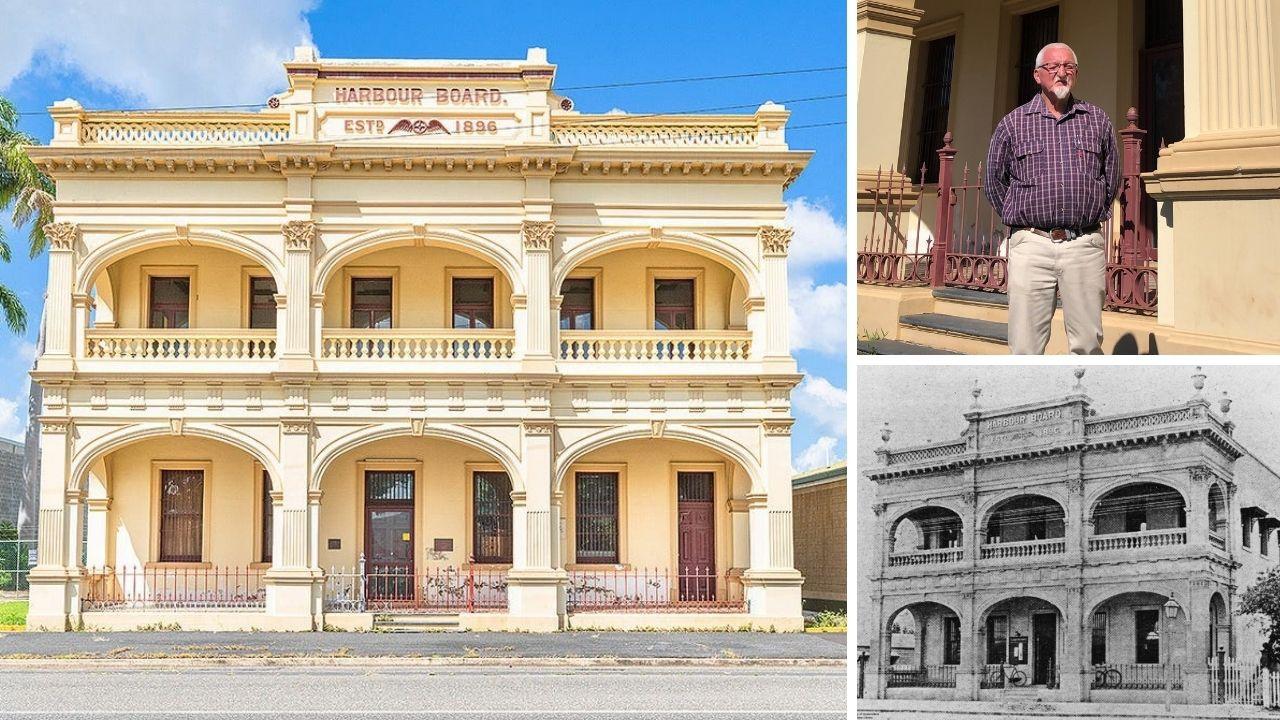
Erected in 1898, this building too showed the importance of the Port of Rockhampton in the 19th and 20th century as a major commercial centre for the state.
The impressive two storey masonry structure which was involved in the business of the town’s ports and would often house gold from Mt Morgan’s mines before it was transported. It was one of several prestigious developments which was built along Quay St.
Mackay/Whitsundays
The Big Mango, Bowen
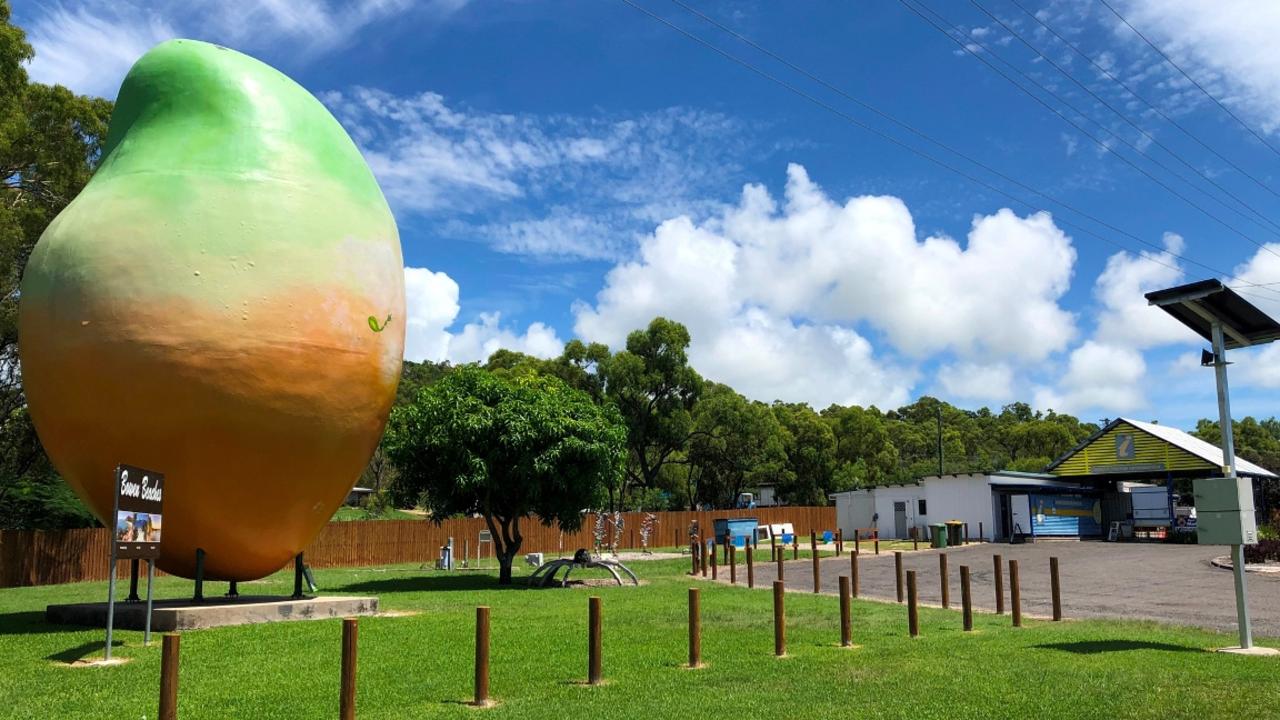
The Big Mango, erected by the Whitsunday Shire Council in 2002, was constructed to honour the Bowen area’s mango industry and has become a tourist favourite for the Whitsunday region.
The delicious 10m fruit, which admittedly is not heritage listed, was famously “stolen” in 2014 as a publicity stunt by Nandos and returned back to its spot.
Sugar Research Institute and Residence

North Queensland, famously known for its sugar industry, owes a debt to the Mackay Sugar Research Institute, known for its tireless efforts for the development of Mackay as the hub for sugar production and research, after being built in 1953.
Melba House, Marian
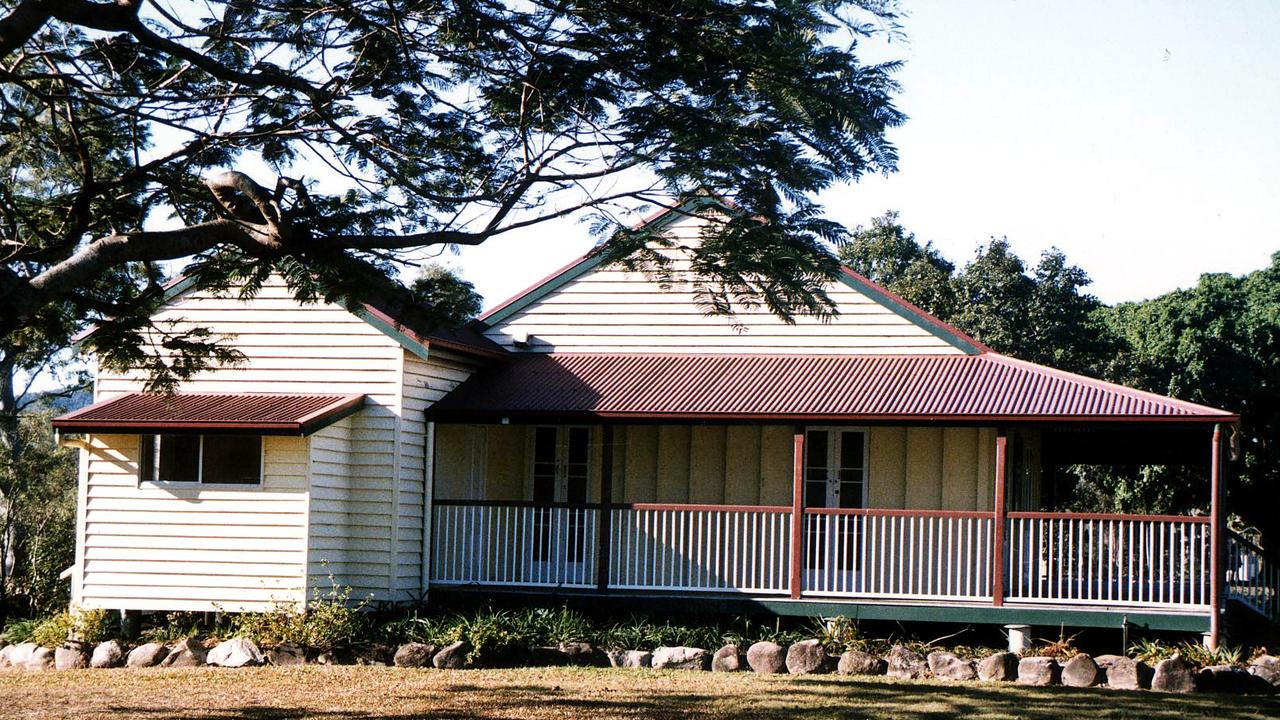
The wholesome Queenslander home of Dame Nellie Melba is a popular haunt for tourists in the rural western part of the Mackay region.
The legendary diva and operatic soprano was known as one of Australia’s best, and spent part of her married life in the home, built in 1882.
Mackay Town Hall

The centre of administration for the former Mackay Municipal Council, the Mackay Town Hall was built in 1912 and served as the hub of local government for more than half a century.
After the Mackay Civic Centre was built in 1975, the hall was leased for various purposes and refurbished in 2001 as part of the Queensland Heritage Trails Network. It now houses the Mackay Family History Society.
More Coverage
Originally published as Heritage buildings, iconic landmarks which shape regional Queensland









